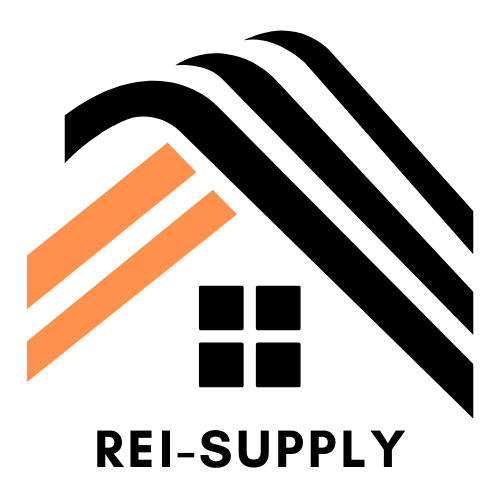Table of Contents
ToggleNavigating the world of home loans can feel like stepping into a maze without a map. With options like conventional and FHA loans, it’s easy to get lost in the jargon and numbers. But fear not! Understanding these loan types can put you on the path to homeownership bliss.
Conventional loans are like the cool kids at school—often preferred by those with a solid credit score and a hefty down payment. On the flip side, FHA loans are the friendly neighbor, welcoming first-time buyers with lower credit requirements and down payments. So whether you’re ready to strut your stuff with a conventional loan or cozy up with an FHA option, knowing the differences can save you time, money, and maybe even a few gray hairs! Let’s dive into the details and help you choose the right path for your financial journey.
Overview of Conventional and FHA Loans
Conventional loans typically require higher credit scores, often starting at 620. Many lenders look for down payments of 20% to avoid private mortgage insurance. These loans are not backed by the government, making the criteria for qualification stricter. Borrowers with solid financial profiles find these loans appealing for their competitive interest rates.
FHA loans cater to a different group of buyers. Lower credit scores, sometimes as low as 580, allow a broader spectrum of applicants to qualify. A down payment of just 3.5% makes homeownership attainable for those with limited savings. FHA loans also offer flexibility, accommodating sellers and easing the purchase process for first-time buyers.
Comparatively, FHA loans include upfront mortgage insurance premiums and annual premiums, influencing the overall borrowing cost. Conventional loans can appeal with fewer ongoing costs if ample equity accumulates. The choice between these two loan types often hinges on individual financial circumstances and future plans.
Industry data indicates that as of 2022, 15% of homebuyers used FHA loans, while 85% chose conventional options. Understanding these differences empowers buyers to identify the most suitable loan for their situation. Selecting between conventional and FHA loans influences home affordability and monthly payments significantly.
Key Differences Between Conventional and FHA Loans

Understanding the key differences between conventional and FHA loans helps borrowers make informed decisions. Both loan types cater to different financial situations and goals.
Loan Requirements
Conventional loans generally require a credit score of at least 620, while FHA loans offer a more lenient approach, allowing scores as low as 580. Conventional loans often necessitate a lower debt-to-income ratio, while FHA loans accommodate higher ratios, which benefits first-time homebuyers. Investigating each type’s eligibility criteria ensures that potential buyers select the most fitting option for their financial profile. Additionally, conventional loans lack government backing, resulting in stricter requirements compared to FHA options.
Credit Score Considerations
Credit scores play a crucial role in qualifying for loans. Conventional loans favor borrowers with strong credit histories, rewarding them with lower interest rates. Conversely, FHA loans provide flexibility for those with lower scores, promoting access to homeownership. Understanding the impact of credit scores on interest rates helps borrowers assess their repayment capabilities. FHA lenders often look at the entire financial picture, offering borrowers the chance to qualify despite past financial challenges.
Down Payment Options
Down payment requirements differ significantly between loan types. Conventional loans typically demand a 20% down payment to avoid mortgage insurance, making them less accessible for some buyers. However, FHA loans require just 3.5% down, making them attractive to those with limited savings. These lower down payment requirements facilitate home purchases for first-time buyers and individuals with financial constraints. Borrowers often find that FHA loans allow quicker entry into the housing market, even with modest upfront costs.
Pros and Cons of Conventional Loans
Conventional loans present a range of advantages and disadvantages that influence a borrower’s decision.
Advantages
Conventional loans often feature competitive interest rates, appealing to borrowers with strong credit profiles. Favorable terms arise from lesser reliance on government backing, which can lead to greater flexibility in loan options. Borrowers typically enjoy a faster closing process due to more streamlined requirements. Additionally, once a borrower reaches 20% equity, they can eliminate private mortgage insurance, reducing monthly payments significantly. This highlights their cost-effectiveness for long-term homeowners. Many lenders offer diverse programs under the conventional umbrella, making them versatile to fit different financial scenarios.
Disadvantages
One of the main drawbacks of conventional loans involves higher qualification standards. A credit score of at least 620 is generally required, limiting accessibility for those with lower scores. Additionally, borrowers must provide a larger down payment, often around 20%, to avoid mortgage insurance. This upfront cost can be a barrier for first-time buyers or individuals with limited savings. Stricter debt-to-income ratio requirements further complicate approval. Overall, these factors can hinder potential buyers from obtaining a conventional loan compared to FHA options.
Pros and Cons of FHA Loans
FHA loans present distinct advantages and disadvantages for potential homebuyers. Understanding these can aid buyers in making informed decisions.
Advantages
FHA loans require a lower credit score, accommodating applicants with scores as low as 580. A down payment of just 3.5% makes homeownership accessible for those who lack substantial savings. By allowing gifted funds or grants for the down payment, FHA loans further facilitate entry into the housing market. Flexibility in debt-to-income ratios benefits buyers who may struggle with conventional loan requirements. Offering options for lower income ranges appeals to first-time buyers seeking affordable homeownership. Lastly, FHA loans are assumable, enabling future buyers to take over the mortgage under original terms, potentially making homes more appealing during resale.
Disadvantages
FHA loans come with upfront mortgage insurance premiums, which increase the overall loan cost. Annual mortgage insurance premiums remain for the life of the loan if the down payment is less than 10%, leading to higher monthly payments compared to conventional loans. Qualifying for FHA loans may involve lengthier processing times due to government involvement, potentially delaying closing. Additionally, purchasing a property in a higher price area presents limitations, as FHA loan limits restrict home prices. Borrowers may face stricter property condition requirements, necessitating repairs before closing. Overall, these factors can affect affordability and buyer satisfaction in the long run.
Choosing between conventional and FHA loans is a crucial decision for homebuyers. Each option has its advantages and drawbacks tailored to different financial situations. Conventional loans often appeal to those with strong credit and the ability to make larger down payments, while FHA loans provide a pathway for first-time buyers and those with lower credit scores.
Understanding these differences can empower buyers to select the loan that best aligns with their financial goals and homeownership aspirations. By weighing the pros and cons of each loan type, individuals can make informed choices that enhance their chances of securing their dream home.





